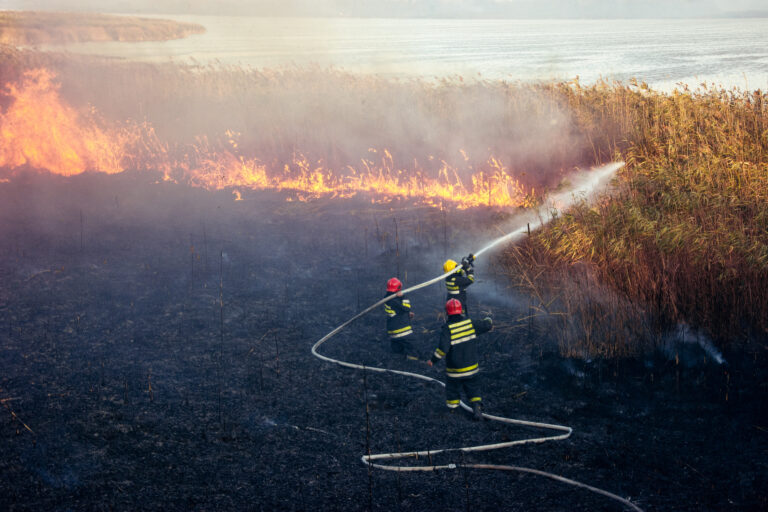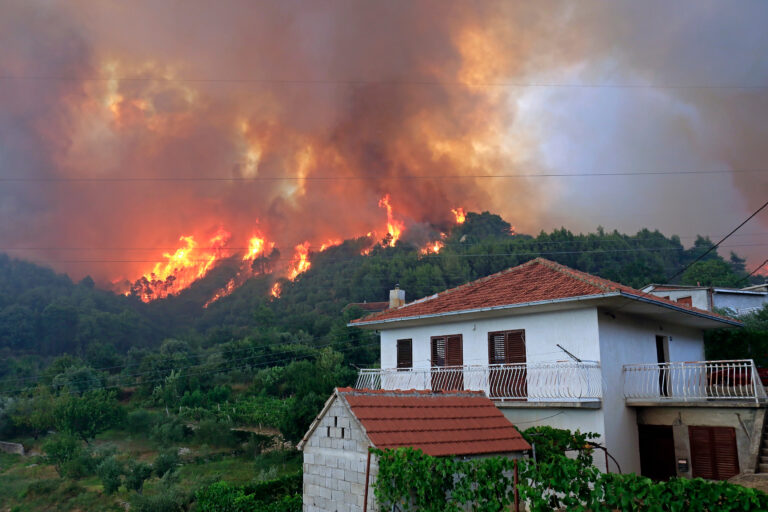Osijek-Baranja County is located in Eastern Croatia and is mainly a lowland surrounded by rivers, wetlands, and forests, which created an abundance of reserves, parks, lakes, and ponds that later became protected areas, declared by the Government. Due to this ecosystem, the agricultural land is also extremely fertile, making this county one of the most important agricultural areas in Croatia, where the main economic branch has been food production and agriculture for many decades.
Certain micro-locations particularly need water in order for the animal and plant life to survive and prosper in the ecosystem, but not too little and not too extreme water waves. For the agricultural land, it is quite similar, the crops need rainfall but not severe rainfall, whereas droughts can also have an impact on the crops and the surrounding environment.
Climate change in our region has had a great negative impact on nature and agricultural land in the form of extremely high temperatures, droughts, hail, lack of water when needed the most, and floods resulting in the reduction of food production, desiccation of farming land and wetlands and the disappearing of habitats for many animal and plant species. Climate change has also had a negative impact on social development through the decline of income and employees in food processing and agriculture and in branches like tourism – outdoor activities in nature (hiking, biking, sport angling, birdwatching, boat touring etc.) combined with gastronomy (local homemade food produced at small family farms) are one of the most important elements of the tourist offer in Osijek-Baranja County.
The biggest challenge is to adapt to the current climate changes and to search for alternative ways to continue agricultural farming, food production and to preserve and protect the remaining wetlands and wildlife in the area.
Pilot projects from other relevant EU projects in the región
ClimateFarmDemo- https://climatefarmdemo.eu/cfd/en/#/farms
CASE STUDIES – https://lessonsonfire.firelogue.eu/case-studies/
WeADAPT – https://weadapt.org/placemarks/maps/
CLIMAAX https://www.climaax.eu/project/
CLIMAAX builds upon existing risk assessment frameworks, methods and tools, and promotes the use of datasets and service platforms for local and regional scale deployment. It will develop a robust and coordinated framework of consistent, harmonised and comparable risk assessments.
ACCEPT – Assessment of Climate Change Effects on Pollution Transport https://accept.cyi.ac.cy/
AQ-SERVE https://aqserve-project.com/
AVENGERS – Attributing and Verifying European and National Greenhouse Gas and Aerosol Emissions and Reconciliation with Statistical Bottom-up Estimates https://avengers-project.eu/
CELSIUS – Projecting Temperature Climate Extremes at Regional to Urban Scales https://celsius.cyi.ac.cy/
CoCO2 – Prototype system for a Copernicus CO2 service https://coco2-project.eu/concept
Edu4Climate – European Higher Education Institutions Network for Climate and Atmospheric Sciences https://edu4climate.cyi.ac.cy/
OptimESM – Optimal High-Resolution Earth System Models for Exploring Future Climate Changes https://optimesm-he.eu/
PREVENT – Improved Predictability of Extremes over the Mediterranean from Seasonal to Decadal Timescales https://cordis.europa.eu/project/id/101081276
LIFE – MEDEA – Mitigating the Health Effects of Desert Dust Storms Using Exposure Reduction Approaches https://www.life-medea.eu/)
CiROCCO – Enhancing the In-situ Environmental Observations across Under-sampled Deserts https://cirocco-project.eu/



